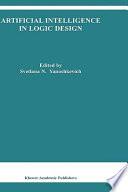
Foundations of Fuzzy Logic and Soft Computing
12th International Fuzzy Systems Association World Congress, IFSA 2007, Cancun, Mexico, Junw 18-21, 2007, Proceedings
Annotation This book comprises a selection of papers from IFSA 2007 on new methods and theories that contribute to the foundations of fuzzy logic and soft computing. These papers were selected from over 400 submissions and constitute an important contribution to the theory and applications of fuzzy logic and soft computing methodologies. Soft Computing consists of several computing paradigms, including fuzzy logic, neural networks, genetic algorithms, and other techniques, which can be used to produce powerful intelligent systems for solving real-world problems. This book is intended to be a major reference for scientists and engineers interested in applying new computational and mathematical tools to achieve intelligent solution to complex problems. We consider that this book can also be used to get novel ideas for new lines of research, or to continue the lines of research proposed by the authors of the papers contained in the book. The 80 papers presented were carefully reviewed and selected form more than 400 submissions. The papers are organized in topical sections on relation between interval and fuzzy techniques, intuitionistic fuzzy sets and their applications, the application of fuzzy logic and soft computing in flexible querying, philosophical and human-scientific aspects of soft computing, search engine and information processing and retrieval, perception based data mining and decision making, joint model-based and data-based learning: the fuzzy logic approach, fuzzy possibilistic optimization, fuzzy trees, fuzzy logic theory, type-2 fuzzy logic, fuzzy logic applications, neural networks and control, as well as intelligent agents and knowledge ant colony.
- ISBN 13 : 3540729178
- ISBN 10 : 9783540729174
- Judul : Foundations of Fuzzy Logic and Soft Computing
- Sub Judul : 12th International Fuzzy Systems Association World Congress, IFSA 2007, Cancun, Mexico, Junw 18-21, 2007, Proceedings
- Pengarang : Patricia Melin,
- Kategori : Business & Economics
- Penerbit : Springer Science & Business Media
- Bahasa : en
- Tahun : 2007
- Halaman : 830
- Halaman : 830
- Google Book : http://books.google.co.id/books?id=PtbDesNTZLIC&dq=intitle:logic+algorithm&hl=&source=gbs_api
-
Ketersediaan :
12th International Fuzzy Systems Association World Congress, IFSA 2007,
Cancun, Mexico, Junw 18-21, 2007, Proceedings Patricia Melin. A Cultural
Algorithm with Operator Parameters Control for Solving Timetabling Problems⋆
Carlos Soza1, Ricardo Landa2, Mar ́ıa Cristina Riff1, and Carlos Coello2 1
Universidad Federico Santa Mar ́ıa, Departamento de Informática Av. Espa ̃na No
. 1680, Valpara ́ıso, Chile {csoza ...









